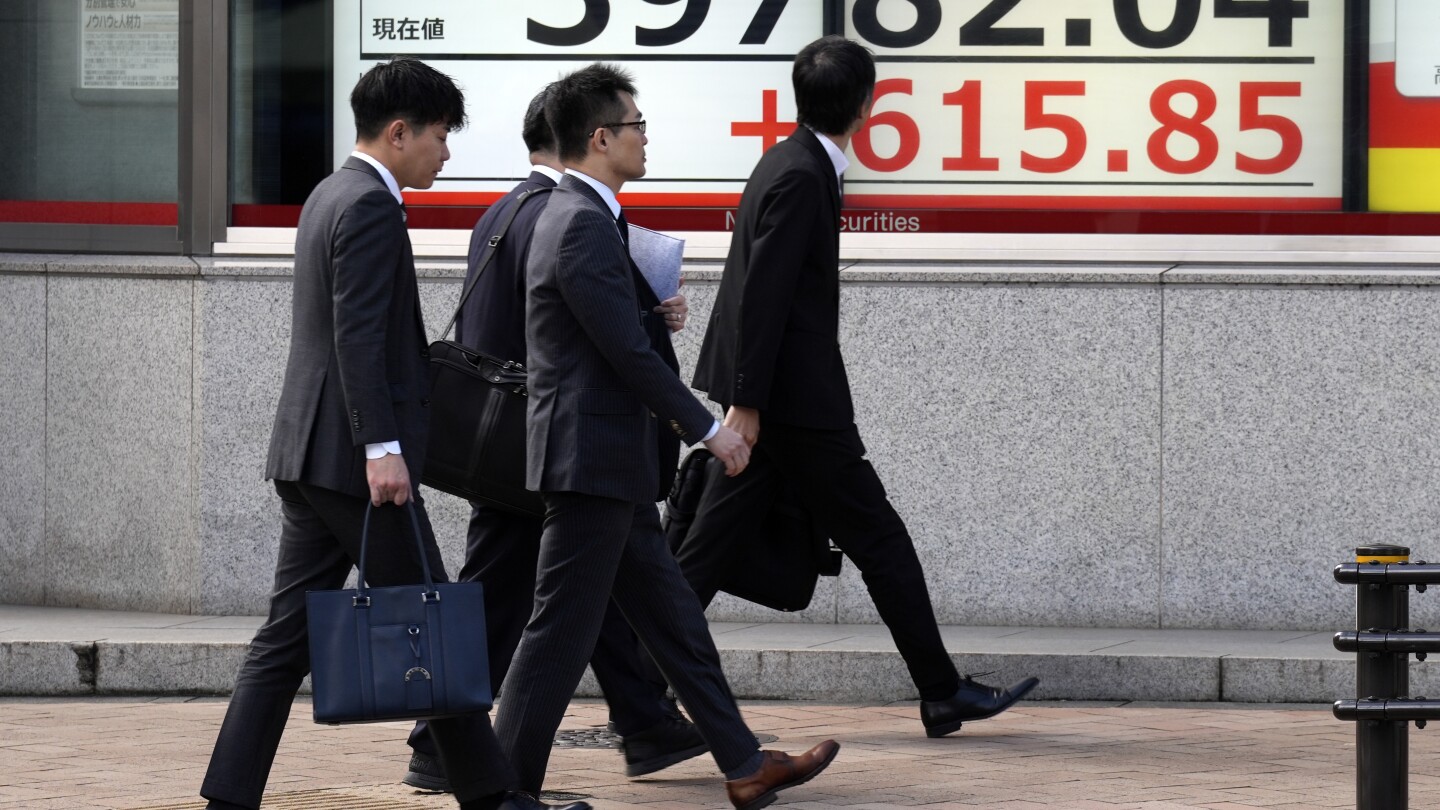HONG KONG (AP) — Japanese stocks again set a record Friday, after U.S. stocks climbed to all-time highs the previous day.
U.S. futures edged higher and oil prices advanced.
Tokyo’s Nikkei 225 jumped 1.9% and ended at 39,940,00 in morning trading. In late February, the index passed the record of 38,915.87 it set at the heights of financial euphoria in 1989, before a financial bubble burst and ushered in an era of faltering growth.
Japan’s unemployment rate dropped to 2.4% in January, from a revised 2.5% recorded in the previous month, but the purchasing managers index for manufacturing activity fell to 47.2 in February, showing depressed demand in domestic and international markets.
A PMI reading under 50 represents a contraction compared to the previous month.
Hong Kong’s Hang Seng was up 0.3% to 16,562.50, and the Shanghai Composite index added 0.3% to 3,024.53.
China’s manufacturing activity contracted for the fifth consecutive month in February with a reading of 49.1, according to the National Bureau of Statistics, while the unofficial Caixin PMI provided a more positive outlook, showing the manufacturing sector expanded for a fourth consecutive month.
Investors are anticipating policies to revitalize the economy at China’s upcoming National People’s Congress next week, during which Beijing will announce the annual GDP growth target.
Korea market is closed for a holiday.
Elsewhere in Asia, Australia’s S&P/ASX 200 advanced 0.6% to 7,745.60, while in Bangkok the SET was down 0.3%.
In Wall Street Thursday, the S&P 500 rose 0.5% to 5,096.27 to top a record set last week. The Nasdaq composite led the market with a gain of 0.9%, to 38,996.39 and surpassed its all-time high, set in 2021. The Dow Jones Industrial Average finished just below its record set last week after rising 0.1%, to 38,996.39.
In the bond market, yields eased after a closely followed inflation report showed prices across the country rose pretty much as expected last month. That calmed worries that had built on Wall Street that the inflation data could show a discomforting reacceleration. Earlier reports showed prices rose more than expected in January at both the consumer and wholesale levels.
“While inflation was hotter than it’s been in a while, it may be more of a flash in the pan than the start of something worse,” said Brian Jacobsen, chief economist at Annex Wealth Management.
Thursday’s report kept intact hopes that the Federal Reserve may begin cutting interest rates in June. Such a move would relax the pressure on the economy and boost investment prices, and the Fed has indicated several cuts may be coming this year.
The Fed’s main interest rate is sitting at its highest level since 2001 in hopes of grinding down inflation by dragging on the economy through more expensive mortgage and credit-card payments. Hopes for coming cuts to rates helped launch the U.S. stock market’s big rally in late October, and the S&P 500 just closed its fourth straight winning month.
Relief on rates, though, would come only if the Fed sees additional convincing data that inflation is sustainably heading down toward its target of 2%.
Traders have recently been pushing back forecasts for when the Fed may begin cutting rates. A series of strong reports on the economy have pushed expectations out from March. On Thursday, another report showed fewer U.S. workers filed for unemployment benefits last week than economists expected. It’s the latest signal of a remarkably resilient job market.
In other trading, U.S. benchmark crude oil added 24 cents to reach $78.50 per barrel in electronic trading on the New York Mercantile Exchange.
Brent crude, the international standard, gained 33 cents to $82.24 per barrel.
The U.S. dollar rose to 150.34 Japanese yen from 149.98 yen. The euro was up to $1.0810 from $1.0803.

